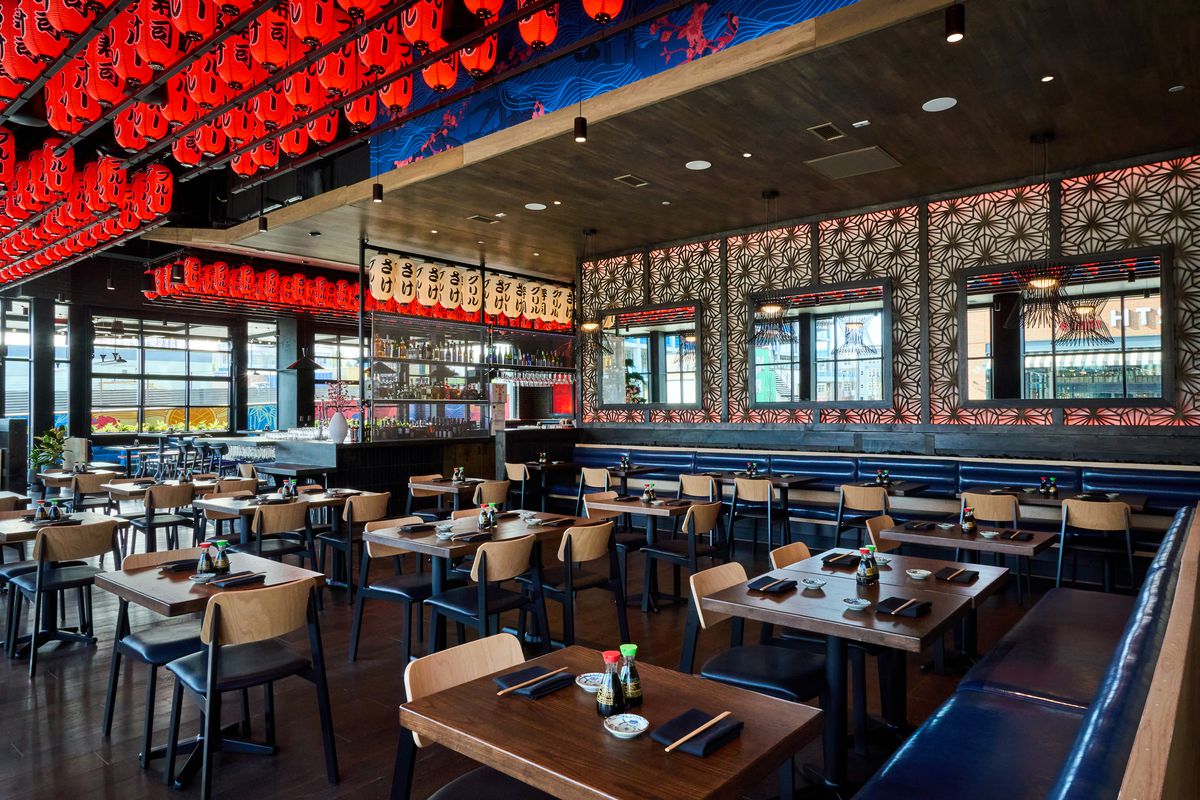Nashville restaurant group Strategic Hospitality recently announced that after over a decade at the 1711 Division Street location, both the Catbird Seat and the Patterson House will relocate to the Gulch. This coming summer, the award-winning Nashville restaurant and bar will take residence on the rooftop of the recently revitalized historic Bill Voorhees building in Paseo South Gulch.
Along with the move, the Catbird Seat will install two new executive chefs in its fifth iteration of the restaurant: Andy Doubrava and Tiffani Ortiz. The two are best known for their nomadic restaurant series Slow Burn, which is dedicated to the preservation of wild and sustainable ingredients.
Chef Brian Baxter, who has served as Catbird’s executive chef for the past four years, will remain with the restaurant until the summer move. However, both Doubrava and Ortiz will host a series of pop-ups offering a preview of what’s to come, including collaborative dinners with Chef Brian Baxter at The Catbird Seat. Reservations for the Catbird Seat are available here with walk-in availability at the Patterson House.
Union Teller Diner and Bar re-opens at the Fairlane Hotel
Union Teller, the Fairlane Hotel’s former lobby-level delicatessen, is back as both a diner and a bar serving all-day breakfast and lunch along with a new evening menu. Led by Executive Chef Angeline Chiang, Union Teller’s new menu highlights include a Big Boy Sando stuffed with four different deli meats, a salmon classic sandwich on a biscuit, stuffed French toast, sausage hash, and a bagel of the day with pimento cheese fondue. Union Teller Diner and Bar is open daily starting at 7 a.m.

A Lainey Wilson pop-up bar at Good Times
Country singer Lainey Wilson is behind a new three-day pop-up bar in downtown with Barmen 1873. Taking over Good Times (1529 4th Ave S.), the space will be decked out in Western flair and playing Wilson’s music. The bourbon-forward drinks include the Wildflowers Old Fashioned, the Wild Horses Manhattan, and the Buckle. The pop-up will be open April 5 to 6 from 6:30 to 11:00 p.m. and April 7, 2024, from 4:30 to 9:00 p.m. Tickets are $10 and available here — 100% of proceeds from the pop-up experience will go to Lainey Wilson’s charitable fund, Heart Like A Truck.
Blue Sushi Sake Grill opens a new location in Franklin
After two years at Fifth and Broadway, Blue Sushi Sake Grill has opened another location at the McEwen Northside complex in Franklin. The restaurant, which was designed in collaboration with Design Collective Nashville, features splashy elements like a backlit collage of a massive Godzilla in the lounge area and large geisha murals on the building’s exterior created by local muralist Eric “Mobe” Bass. As with its other locations, the menu features an assortment of rolls, sashimi, and Japenese-inspired dishes like the Cherry Bomb featuring bigeye tuna on top of rice tempura, topped with serrano, sriracha, togarashi, and ponzu sauce; a beef tenderloin served on sizzling rocks with jalapeno ponzu and yuzu kosho; and crispy Brussels sprouts tossed in a creamy lemon miso sauce and toasted cashews. Blue Sushi Sake Grill is open Monday through Thursday from 11 a.m. to 10 p.m., Friday and Saturday from 11 a.m. to 11 p.m., and Sunday from noon to 9 p.m.

Quick hitters:
- All-you-can-eat crawfish boil at Bringle’s Smoking Oasis: On Sunday, April 7 at 11 a.m., Bringle’s is partnering with Billy Link from Louisiana for a classic crawfish boil with drink specials throughout the day. Tickets are $45 and can be purchased here.
- Dine to Shine: Lighting the Night for Nashville Children’s Alliance: Nashville Children’s Alliance will host a fundraiser on Friday, April 5 at 6 p.m. featuring a multi-course dinner from local favorites like Noko, Sean Brock, Black Box Ice Cream, East Side Banh Mi, Butcher & Bee, and the Indigo Road Hospitality Group (Oak Steakhouse, O-Ku). Tickets are still available for $150 per person and can be purchased here.

